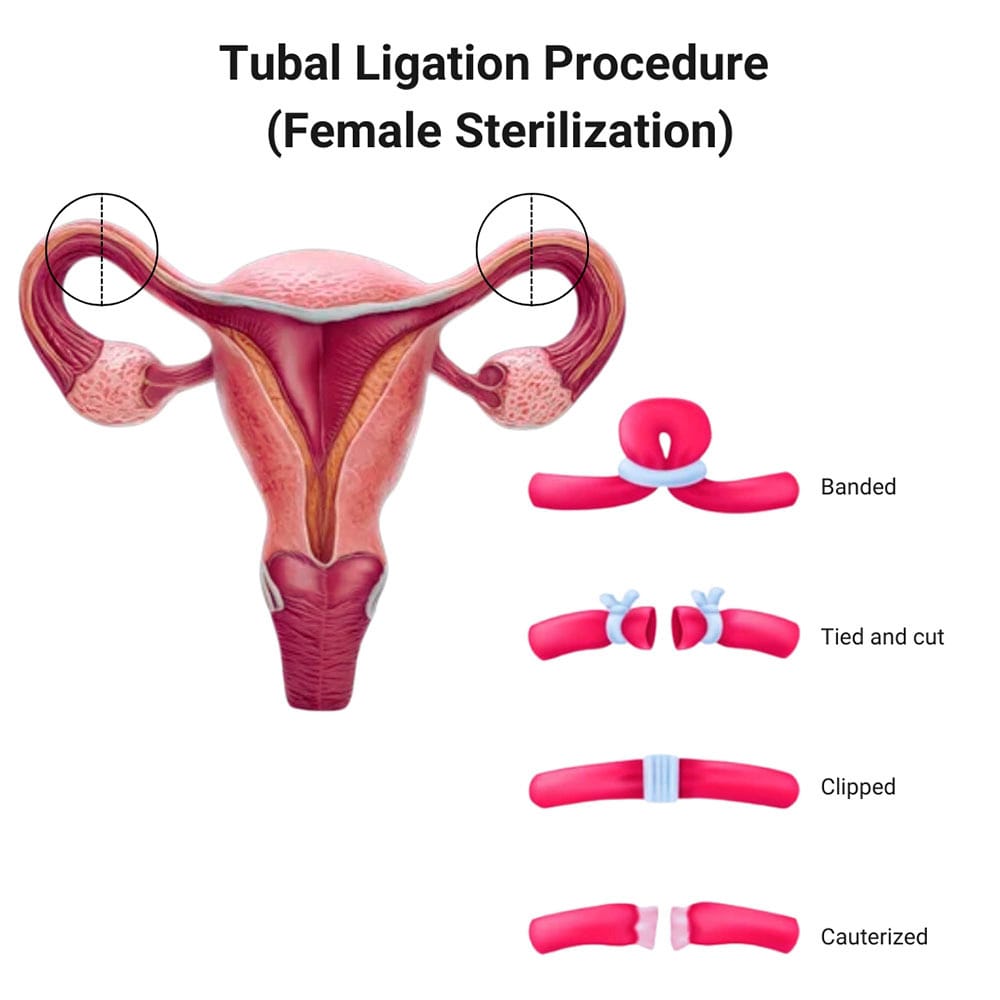What’s Tubal Ligation?
 Tubal ligation is a form of birth control in which the fallopian tubes are surgically blocked or severed. It’s also called tubal sterilization. This birth control method is often an option for women who want a highly effective and long lasting or permanent option. It’s a good fit for women who’ve decided they don’t want children or have completed childbearing.
Tubal ligation is a form of birth control in which the fallopian tubes are surgically blocked or severed. It’s also called tubal sterilization. This birth control method is often an option for women who want a highly effective and long lasting or permanent option. It’s a good fit for women who’ve decided they don’t want children or have completed childbearing.
Cohen Medical Practice (CMP) in New York City is the go-to practice for effective birth control methods that fit your lifestyle. This team of gynecologists and surgeons led by Dr. Felix Cohen offer you the support to make an informed decision on birth control. Their skills, expertise and state-of-the-art clinic ensure you get world-class care for fertility services or any other gynecological service you may need.
What Options Do I Have for Tubal Ligation?
There are several options to achieve the goal of sterilization, with each method using a unique approach. Your CMP gynecologist recommends the best option depending on your medical history, age, and overall health outlook. Bipolar coagulation is a common method in which the surgeon cauterizes sections of the fallopian tube with an electric current.
Other tubal ligation methods include:
- Fimbriectomy. Your NYC doctor removes a section of the fallopian tube close to the ovary in this procedure.
- Irving procedure. This involves suturing the fallopian tube in two sections and cutting out the portion between the sutures.
- Pomeroy tubal ligation. The surgeon makes a loop of the tube then strangles the loop and cuts it off.
- Tubal rings. A ring is placed that tightens around the fallopian tube, closing it off.
- Tubal clips. Small clips are placed to crimp the fallopian tubes and prevent the passage of eggs.
- Essure. This non-surgical method involves placing a small coil in the fallopian tube, where it causes scarring and blockage.
- Laparoscopic tubal ligation. This is a minimally invasive operation during which your surgeon makes small incisions on the lower belly to get to the fallopian tubes using a laparoscope.
You should consider tubal ligation if you seek a long-term or permanent birth control method. Tubal ligation has several advantages as a birth control method. It’s highly effective with a negligible risk of failure.
Other reasons you may want to consider it include:
- Low maintenance. Tubal ligation doesn’t need daily or periodic maintenance, which reduces the risks of human error and forgetfulness.
- Avoidance of hormonal side effects. Tubal ligation is an attractive option if you experience adverse reactions with hormonal birth control.
- Fix-and-forget. You only need one operation, and you can forget about birth control for the rest of your life.
Vasectomy vs. Tubal Ligation: Which Is Right for Me?
Vasectomy is a surgical birth control method where the vas deferens in the male partner’s testes are cut to prevent sperm from reaching the semen. It’s common for couples weighing different birth control options to look at vasectomy vs. tubal ligation to decide who undergoes the operation.
CMP in New York offers all the helpful information you need to come to a decision that works for both you and your partner.
The case for tubal ligation is supported by several factors, including:
- No impact on male fertility
- Possibility for tubal ligation reversal
- High effectiveness
- Faster recovery time
- Low risk of complications
How Is Tubal Ligation Performed?
Tubal ligation is an outpatient surgical process that takes 30 to 60 minutes. It can be performed under general anesthesia or conscious sedation for minimal discomfort. CMP doctors use a minimally invasive approach ensuring minimal scarring and quick recovery.
A team of CMP New York’s surgeons and gynecologists handle this operation.
The overview of a laparoscopic tubal ligation operation includes:
- Making incisions in the lower abdomen
- Inserting the laparoscope to visualize the fallopian tubes
- Opening the tubes using one of the techniques required for your procedure
- Performing the chosen tubal ligation method
- Closing the incisions after the operation
What Are the Risks of Tubal Ligation?
There are potential tubal ligation complications, which are quickly managed with the right interventions by Dr. Cohen and his team. Some of the common tubal ligation side effects include bleeding and reaction to anesthesia.
It’s possible to experience post-tubal ligation syndrome with symptoms that include bloating and abdominal pain.
CMP New York doctors minimize these risks by observing the highest standards of medical care today with:
- A team of highly skilled and experienced gynecologists and surgeons
- State -of-the-art facilities with the latest theater and medical equipment
- Personalized treatment and care
- Close postoperative follow up
Can I Get Pregnant after Tubal Ligation?
It’s possible to get pregnant after tubal ligation if you undergo tubal ligation reversal, and there are tubal ligation pregnancy statistics to show it happens, sometimes accidentally and sometimes by choice. One study reported that about three to five percent of women experience pregnancy after tubal ligation.
Depending on your age and other physical issues, a purposeful tubal ligation reversal is effective more than 50 percent of the time. This process restores the fallopian tube’s ability to allow passage of the female eggs.
CMP New York is your preferred medical partner for birth control methods including tubal ligation. You receive personalized solutions that fit your lifestyle. Take control of your reproductive health. Contact Cohen Medical Practice (CMP) to learn if tubal ligation is right for you.

